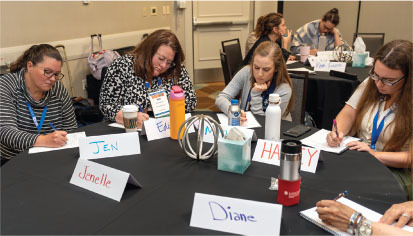June 2014
CONCEPTS
Where Does Power Come From?
BY AUSTIN LIN, E.I.T.
 A year after he left presidential office, Teddy Roosevelt arrived in Paris in 1910 and gave his now famous “Man in the Arena” speech as part of a larger address to the crowds at the prestigious Sorbonne, the precursor to the modern University of Paris:
A year after he left presidential office, Teddy Roosevelt arrived in Paris in 1910 and gave his now famous “Man in the Arena” speech as part of a larger address to the crowds at the prestigious Sorbonne, the precursor to the modern University of Paris:
It is not the critic who counts; not the man who points out how the strong man stumbles, or where the doer of deeds could have done them better. The credit belongs to the man who is actually in the arena, whose face is marred by dust and sweat and blood; who strives valiantly; who errs, who comes short again and again, because there is no effort without error and shortcoming; but who does actually strive to do the deeds; who knows great enthusiasms, the great devotions; who spends himself in a worthy cause; who at the best knows in the end the triumph of high achievement, and who at the worst, if he fails, at least fails while daring greatly, so that his place shall never be with those cold and timid souls who neither know victory nor defeat.
The journey of engineers, from academic education to EIT/PE licensure to the struggles encountered during their careers, is filled with successes and failures. But that is where the engineer grows in experience, leadership, and power.
For the time being, let’s forego that image of power portrayed by Zeus throwing lightning bolts off a mountaintop.
When we say power, we mean the way in which influence is exerted toward obtaining personal and professional results. Professional engineers in particular use the keel of ethics to concentrate that idea of power into the areas where it serves the greatest societal good.
But how else can power be characterized? Is it sheer expertise? Is it authority resulting from title or position? Is it the ability to stay “in the arena” and not just strive valiantly, but to do so successfully?
American scientist David McClelland, a professor of psychology at Harvard and later at Boston University, classified power into two categories: p-power and s-power.
P-power (or personal power) is defined as the need for power as attributable toward accomplishing personal life goals. P-power views life as a zero-sum game and that the world can fall into only one of two categories: winners and losers.
S-power (or societal power) is defined as the need for power in order to secure goals and advancement for an entire society, for a greater good. S-power holds a moral standard at its heart and applies power toward results that have a wider benefit toward society as a whole.
The writer Ian Robertson, in his book The Winner Effect: The Neuroscience of Success and Failure, implies that the true victor in the arena needs a balance of both p-power and s-power, or as he states, s-power tames p-power.
 Roosevelt tells us that power does not exclusively emerge from one person winning at the cost of another person losing. Rather, true power is a latent trait, revealed as a result of one person’s individual encounters with both winning and losing. Those incremental outcomes cumulatively establish the platform of experience and wisdom that allow for the successful acquisition of results. Power is a result, a sense of adaptability in the face of a great challenge.
Roosevelt tells us that power does not exclusively emerge from one person winning at the cost of another person losing. Rather, true power is a latent trait, revealed as a result of one person’s individual encounters with both winning and losing. Those incremental outcomes cumulatively establish the platform of experience and wisdom that allow for the successful acquisition of results. Power is a result, a sense of adaptability in the face of a great challenge.
The progression of a professional engineer’s career is a constant exchange between one’s p-power and s-power. P-power is the strength to drive one’s professional mastery and capability-building in the solution of engineering problems. S-power is the reflection of that personal intent, creating the engineering outcomes that benefit the public well-being. S-power is the obligation to protect society while being dedicated to its advancement.
The power that engineers possess can be derived from those “great devotions”: technological advances scaled across society. Society’s success is advanced by the new highway interchange that connects cities faster; the wetlands projects that protect natural resources; the new manufacturing plants producing safer, more fuel-efficient cars; the data networks that bring people together, closer, across regional and national boundaries.
Power is not a weapon wielded in war, it’s how the war itself is fought.
And the arena is huge.
NSPE member Austin Lin, E.I.T., is the author of NSPE’s Young Engineers blog.


 Volunteering at NSPE is a great opportunity to grow your professional network and connect with other leaders in the field.
Volunteering at NSPE is a great opportunity to grow your professional network and connect with other leaders in the field. The National Society of Professional Engineers (NSPE) encourages you to explore the resources to cast your vote on election day:
The National Society of Professional Engineers (NSPE) encourages you to explore the resources to cast your vote on election day:




